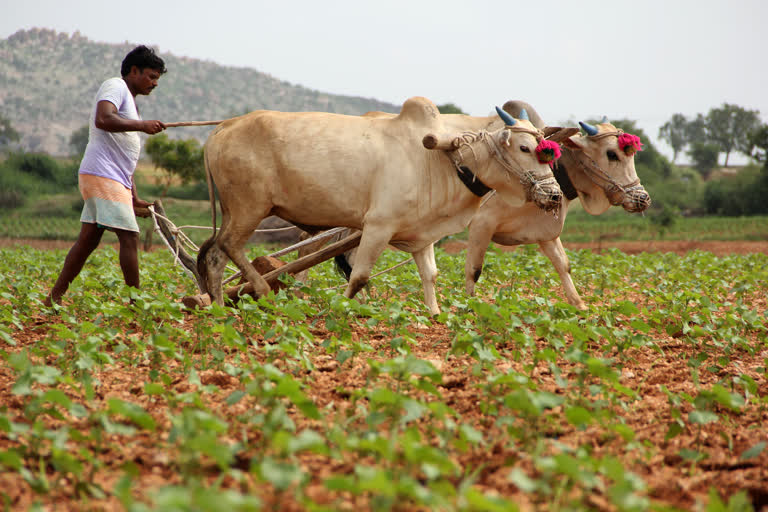Hyderabad: On 31st October 2019, the print and electronic media were abuzz with the celebrations of India’s Sensex reaching a life time high, by touching the mark of 40,392 at one point. While it is a moment to cherish for the investors, it is also pertinent to see the other side of the economy which is craving for attention.
However the mainstream media missed an important aspect in its euphoria of celebrating the market rally. On 30th October 2019, one of India’s prominent financial services groups, JM Financial had released a report, based on its research conducted across 13 states of India. It found that the agri income growth in the country has been adversely affected by low food prices and this would make the task of doubling farmers' income tougher in the time to come.
A few days before this report was released, it was found that the country’s Fast Moving Consumer Goods (FMCG) market slowed down during the September quarter, with volume growth in rural India plunging to a meagre 2 per cent from 16 per cent a year ago. For the first time in the last seven years, the FMCG’s rural growth dropped below the urban growth.
These two pieces of news items, when seen together provide a deeper policy insights into the present state of the rural economy of the country and brings forward the dire state of affairs.
The first aspect provides a note of caution about the rural incomes and the second aspect brings forward the already deteriorating rural demand, which has a direct linkage with the rural incomes and rural growth. This becomes very pertinent at this point of time, given the fact that the country is facing an economic slowdown and whenever it faced a situation like this, it was the rural India that came to the rescue, by spending more and helping the revival.
Contribution of rural demand in economic growth
In fact, in the last ten years, the sales of the branded daily needs in the country have largely thrived due to the rural India that houses a population of more than 800 million, and accounted for 36 per cent of the overall sales of FMCGs in the country. This denotes the significance of rural demand and its contribution of the overall economic growth of the country.
It is in this context it is pertinent to understand the dynamics of rural growth in India and understand the underlying causes for the falling rural growth and explore the way ahead.
What is driving down rural growth?
Rural growth in India is being dragged down by a plethora of reasons that are interlinked with one another. First and foremost, there is a declining trend in real rural wage growth. In addition to this, there has been a stagnation in the rural incomes for the last years and lack of jobs in the rural parts and an erratic rainfall distribution worsened the situation, leading to further depletion of rural incomes. A fall in the incomes eventually led to decreasing consumption and lesser demand.
On the supply side, liquidity crunch is being faced by the traders and agriculturists in the rural areas. Although the Reserve Bank of India had reduced the policy rates adequately, the benefit of low lending rates are not being transferred by the banks to the public, thereby dampening the growth prospects. For instance the credit growth of the country’s banks is at 8.8 per cent, which is the lowest in the last two years.
Even the nonbanking financial companies (NBFCs) are cautious enough in lending to the rural areas and informal sector, particularly after the debacle of Infrastructure Leasing & Financial Services (IL&FS).
These developments had a serious impact on the cash flows of the farmers, firms and traders. In general, the rural areas got more affected in such circumstances, relative to urban areas. While the urban markets will have larger access to funds in multiple channels, the rural markets are constrained by the access and availability of funds to expand their business. This had put a downward pressure on the rural markets, in addition to the falling demand. As a result, the Country is witnessing a slower expansion and growth of rural markets, compared to the urban markets for the first time in the last seven years.
Reviving the rural growth
